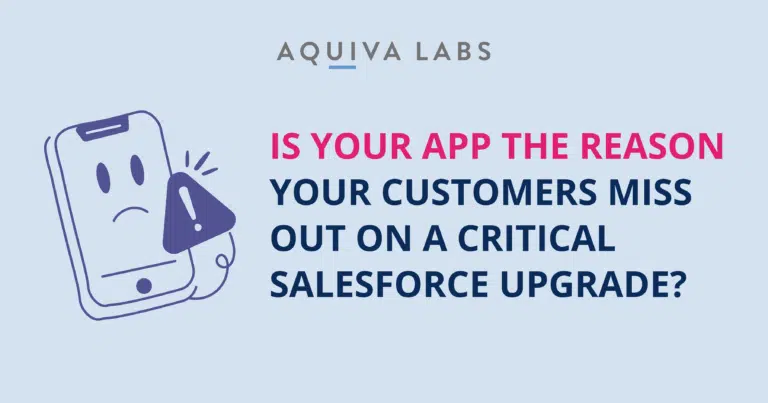Salesforce’s Summer ’25 release lands on 14 June. One change in particular demands immediate attention from teams managing complex or long-running Salesforce orgs.
That change is the shift to ICU Locale Formats. If your org contains legacy metadata using an old API version, the ICU update will be silently deferred.
Here’s What That Means
Salesforce is replacing its legacy JDK-based locale formatting engine with the modern ICU (International Components for Unicode) standard. This affects how dates, times, numbers, and currencies are displayed across different regions and languages.
It’s a good update, but there’s a catch:
If any metadata in your org (Apex, Flows, Lightning Components, etc.) uses API version < 45, Salesforce will not enable ICU Locale Formats in your org during the Summer ’25 upgrade.
Even one outdated Apex class or Flow can block the rollout, and the change won’t throw an error or alert; it will simply be skipped.
What That Looks Like in Real Life
- You upgrade to Summer ’25.
- Users expect updated regional formatting.
- They don’t see it. Date and number formats still look like the old versions.
- Support tickets come in.
- Your team investigates and finds the root cause: an old Flow version or Apex class from years ago that’s still running on API 44.
- Suddenly, the problem is urgent. And internal stakeholders are asking, “Why didn’t we know this would happen?”
Why This Matters
Even though the change is technical, the business impact is real:
- Delayed rollout of new features like ICU formatting
- Frustration among global teams expecting consistency
- Reputational risk if regional compliance or localization is affected
- Increased internal support load chasing a fix that could have been prevented
What You Should Do Now - Before June 14
Step 1: Audit Your Metadata
Identify all metadata in your org using API version < 45
Focus especially on:
- Apex classes and triggers
- Lightning Web Components (LWCs)
- Aura components
- Visualforce pages
Step 2: Upgrade API Versions
- Update each outdated component to the latest stable API version
Step 3: Test for Confidence
- Run all Apex tests and Jest/unit tests for LWCs
- Perform end-to-end smoke tests in your staging or Summer ’25 sandbox
- Check that formatting behavior has changed where expected
Step 4: Deploy and Monitor
- Roll out your updated metadata to production ahead of June 14
- Confirm ICU is enabled by validating locale behaviors in the upgraded org
What About AppExchange Apps?
While this article focuses on your local metadata, it’s worth noting that installed managed packages can also defer ICU if they include old metadata.
- Consider reaching out to your critical vendors
- Ask if their packages are ICU-ready and if they’ve updated to API 45+
- If not, plan to monitor and escalate after the upgrade
Final Thought: This Is Preventable
The ICU change is one of those “small” platform shifts that can have an outsized impact if left unaddressed. But if you act now – before June 14 – you can avoid being caught off guard, reduce your support burden, and show internal stakeholders that your Salesforce team is proactive and in control.
Don’t let one outdated Visualforce Pages or Apex class delay your progress.
Need Help?
If you’re short on time or tooling to run a full metadata audit and version upgrade, Aquiva Labs can help.
We specialize in:
- Org metadata audits
- Custom development and refactoring
- Pre-release readiness for enterprise Salesforce teams
Reach out now. We can help you get ICU-ready in time.
More Resources
Author

Jakub Stefaniak
Field CTO




